Down to Earth: Understanding the regenerative agricultural practices
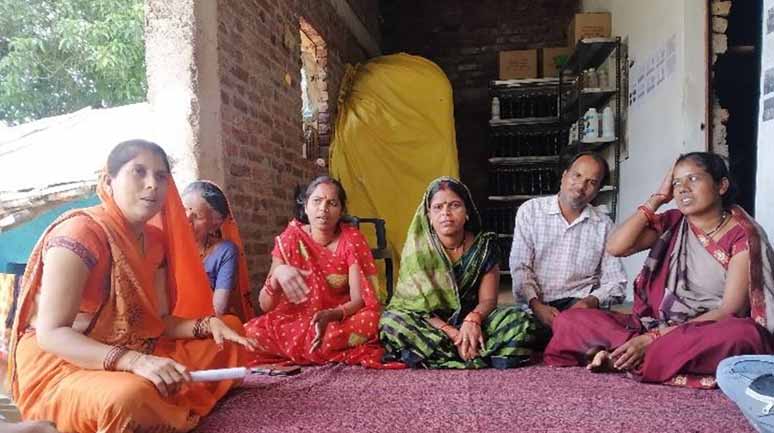
A green transition is underway in the Indian agricultural system. Policymakers and practitioners have been promoting different approaches and techniques which are sophisticated and down to earth. The underlying principle of such methods is that they mimic and work with natural processes rather than creating new procedures which tend to replace them. These natural processes will in turn help in the regeneration of the soil and the ecosystem paving the way for a greener, sustainable, and more resilient economy.
The smallholder farmers in Agroecological zone 7 of Jharkhand and Madhya Pradesh are working with such innovative and sophisticated methods of production. They are encouraged to switch to regenerative farming methods which encompass different approaches and tools which can be applied to various stages in the agricultural production cycle. PRADAN has come up with a list of interventions to apply innovative methods on the ground. The farmers (read: women farmers) are given training on the technical know-how of various regenerative agricultural practices. The aim is to encourage farmers to adopt these methods at a small scale, enabling them to apply the inputs in their farms so that in the long run the ecosystem is regenerated.
Regenerative Agriculture practices

Figure 1: Regenerative Agriculture Wheel
This regenerative agriculture wheel (figure 1) provides a broad framework for shifting the current agricultural system from linear to circular. The main elements are plant health, nutrition, soil, water, labor, storage, transport, information services, and processing. By working along the different aspects, we aim to regenerate the system through applying biofertilizers and biopesticides, good quality seeds, using customized labor tools, promoting good and safe storage, innovative processing mechanisms, and creating better market linkages. Therefore, the focus is not just on going back to traditional organic farming methods but on going a step further to include the other elements of the agricultural system.
Regenerative agriculture as a concept and practice has become very rich and sophisticated over the years. It is seen as a path to the future by borrowing ideas from the past and adding innovations to make it work. The examples given below are not an exhaustive list but a few early and successful examples of how regenerative agricultural practices are being adopted and promoted in different geographies in India. There is much more to regenerative agriculture than the examples listed and many more options that have the potential to bring a positive transformation in the current way of practicing agriculture.
Multi-layer cropping:
Through multi-layer cropping, farmers can grow two or more crops simultaneously (Photo 1). The approach is to grow leafy vegetables like spinach in the ground and crops like bottle gourd, bitter gourd, and other varieties of gourd in the upper layer by making use of a temporary structure. By using the same amount of fertilizers, farmers can grow more crops. Thus, leading to more yield, income, and soil health. The multi-layer cropping system of leafy vegetables and gourd enables replenishment of soil nutrients and efficient use of water.
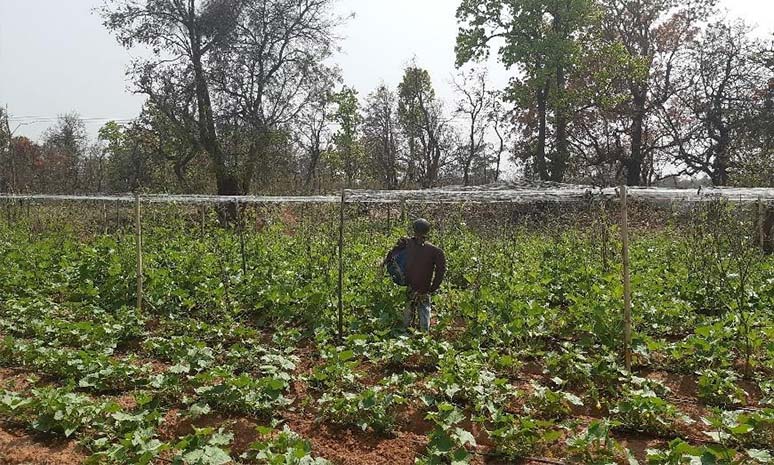
A farmer practicing multi-layer farming
Making bio-fertilizers:
Another approach and one of the most critical is providing training and spreading awareness on making bio-fertilizers and bio-pesticides at a decentralized level. A few members from the different community institutions come together to form a Bio-Resource Centre (BRC). The members are responsible for making fertilizers and pesticides at the local level. They are given training on making the different products, and regular monitoring of the quality is also done by Community Resource Persons and PRADAN staff members. Farmers can purchase the other fertilizers/pesticides from the BRC directly.
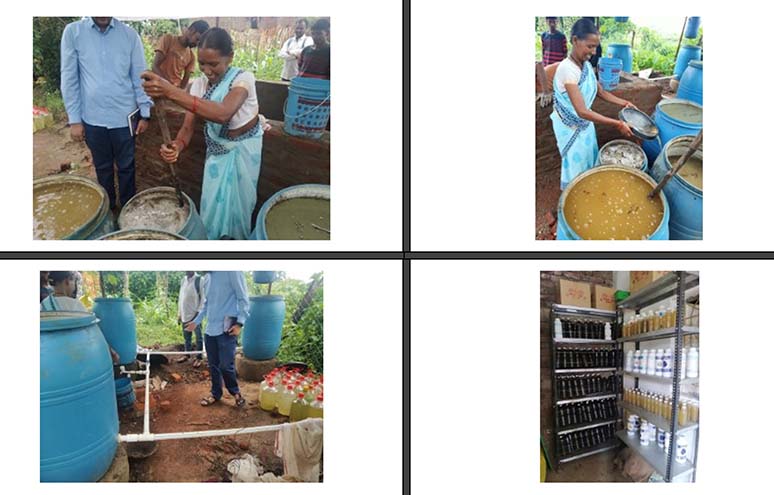
A member of the BRC making bio-fertilizer
FPO as extension workers:
Farmer Producer Companies (FPOs) were created to have better market linkages and enable farmers to get reasonable prices by removing the presence of middlemen. The farmers complained of not getting a fair price, weakened bargaining power, and less incentive to produce organic produce. With FPOs working as extension agents who provide farmers with fertilizers, seeds, and pesticides and a space to sell their organic produce, farmers are willing to take up regenerative agriculture practices. They are sure of the quality of the input and are assured of a fair price for their produce. Thus, the FPOs work as change agents toward regenerative agriculture by taking care of input supply and market access.

Soil testing:
Taking good care of the soil is one of the most essential components of regenerative agriculture. Undertaking practices which replenish the soil health and regularly monitor soil health are equally important. Farmers are linked with Krishi Vigyan Kendras (Farmers Knowledge Institutes). The KVKs are responsible for collecting soil samples to determine the nature of the soil and what kind of crops can be grown. It also highlights what steps need to be taken to ensure that health is restored in case the results are unfavorable. Soil samples have been taken in many areas across Jharkhand and MP; however, many farmers are still awaiting results.
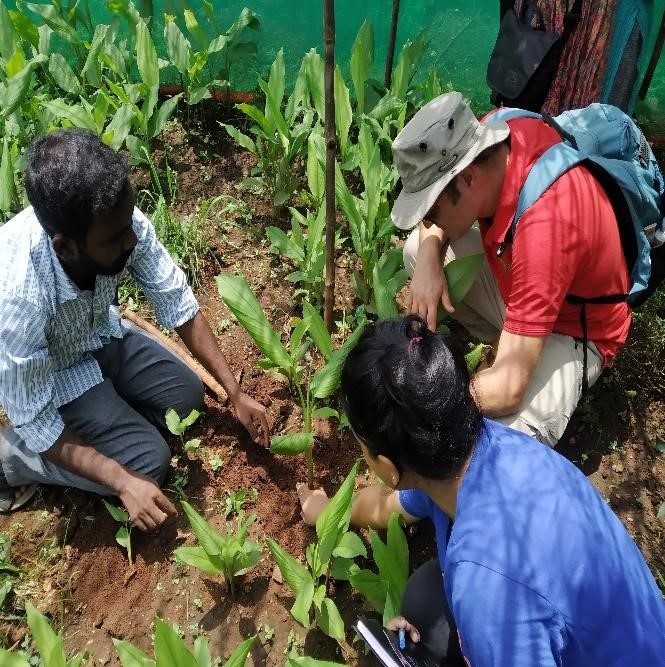
Building water harvesting structures:
Access to secure water is critical for agriculture. Many interventions like building farm ponds, contour trenches, and check dams and wells have been undertaken to store the rainwater, which can then be used for agriculture in the dry season. A ridge-to-valley approach is adopted to ensure that water does not run off but instead gets percolated to replenish the groundwater. New innovative irrigation mechanisms like drip irrigation and lift irrigation have also been promoted to ensure that water is available throughout the year.
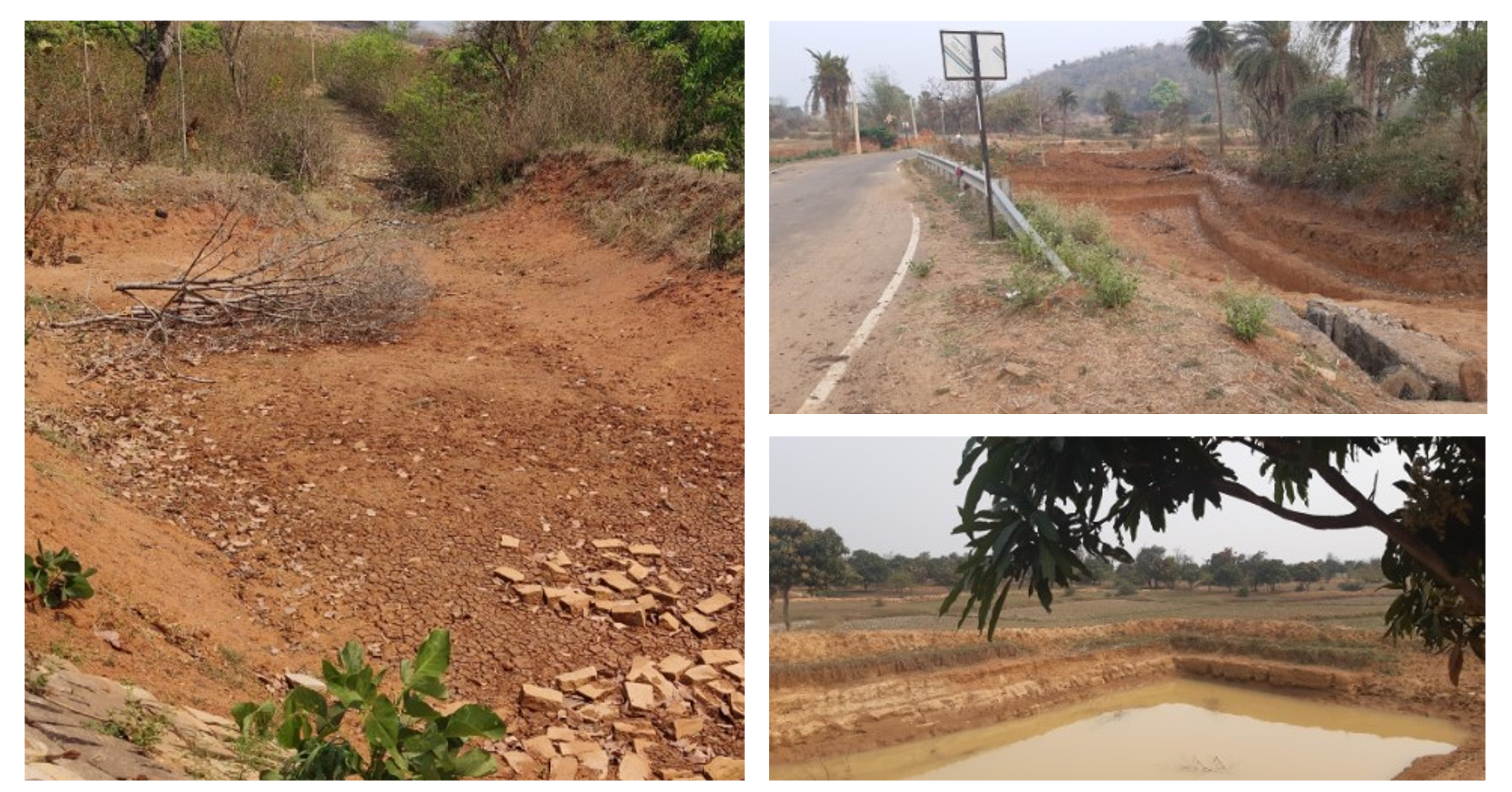
Different water harvesting structures present in the field areas
Compost unit:
A composting unit has been developed in the Khunti district in Ranchi, which aims to provide 100 tonnes of compost to farmers at a subsidized rate. Currently, no system in place enables easy access to compost at an affordable rate. By removing the supply constraints, the compost unit will meet the demand for farmers who want to adopt regenerative farming methods.
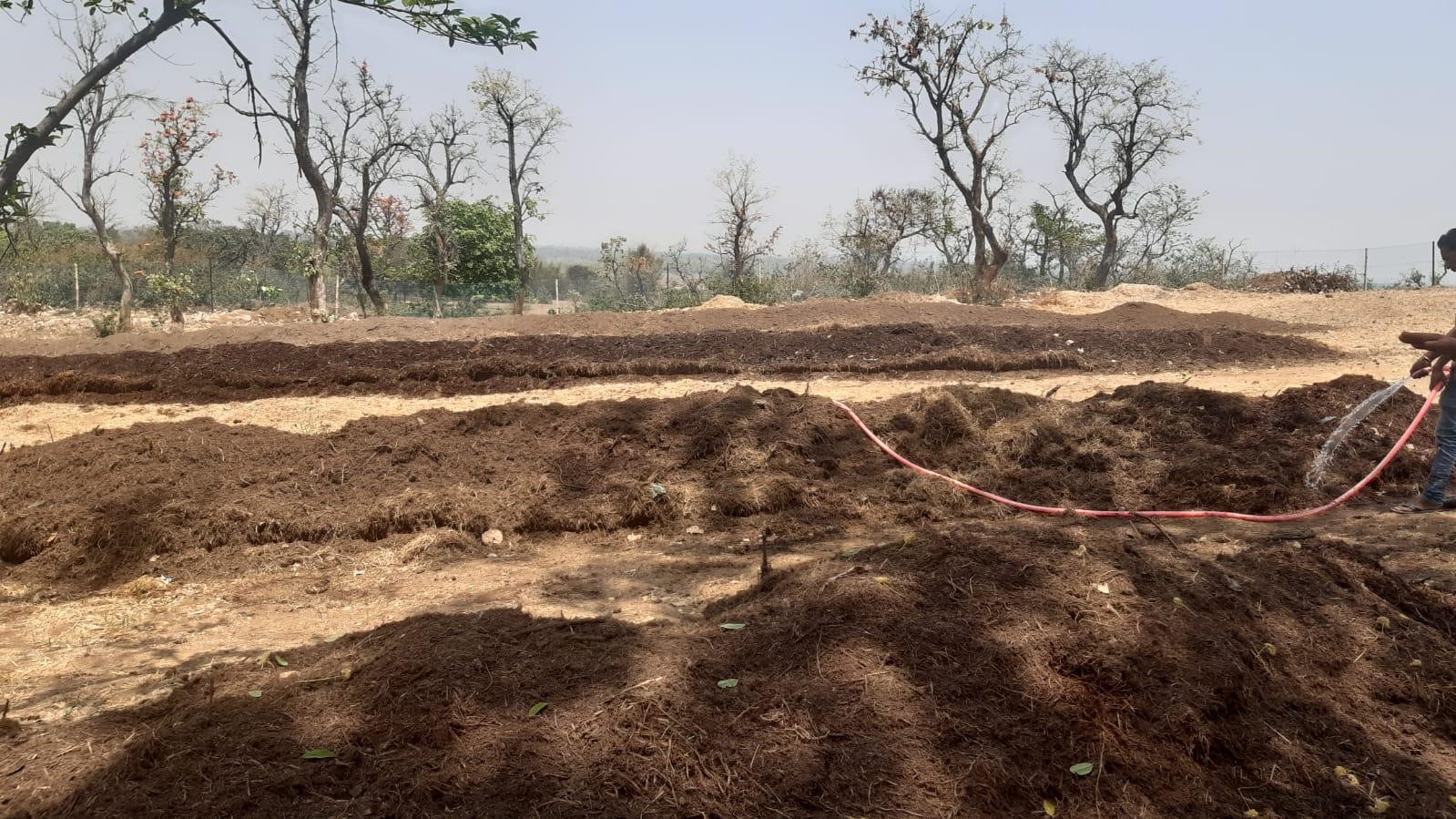
The composting unit with three rows of compost in Khunti, Ranchi.
Regenerative agriculture is considered a highly productive method of doing agriculture. The examples above highlight that while some processes take a longer time to show their impact fully, there are others whose impact is visible in a shorter term. The regenerative agriculture wheel also focuses on the increase in sustainable livelihoods in agriculture and Agri services. It gives a rough idea of how the changes in agricultural practices can help revive the economy. For example, adopting different practices like mechanical harvesting, on-farm processing, better transport facilities, and safer storage for crops will help promote various livelihood activities. Additionally, the decentralized process of making organic inputs will impact local businesses by creating more reliance on local services and information. Last but not least is the power of regenerative agriculture to increase the productivity and quality of crops, contributing to better health and nutrition for everyone.

